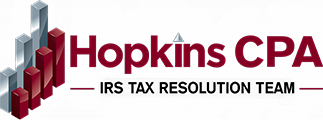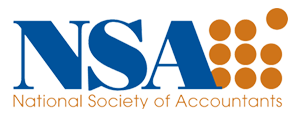As you get near your retirement age, the choices you make about how to save for this next chapter can have a big impact on your long-term financial well-being. This is an exciting time, but it’s important to understand your options.
Recent stats show that about 22% of Americans have under $5,000 saved for retirement, highlighting how vital it is to know the difference between 401k and Roth IRA, including 401k Roth vs 401k traditional options. This knowledge isn’t just handy—it’s a must-have for anyone serious about planning for retirement.
In this guide, we’ll break down the key difference between 401k vs IRA vs Roth IRA. This will give you the insights you need to choose the best retirement savings path for your personal financial goals and timeline. Get ready to take control of your financial future!
What are the Different Retirement Saving Options?
Let’s explore how the right retirement saving option can enhance your financial stability and help secure a prosperous future, by examining the differences and advantages of 401(k) plans, Roth IRA accounts, and Roth 401(k) plans.
401(k) Plans
A 401(k) plan is an employer-sponsored retirement savings account. It allows employees to dedicate a portion of their pre-tax salary to a retirement account, which means that contributions are made before income taxes are deducted. This can lower your taxable income and, therefore, reduce your tax bill for the year. The money in your 401(k) grows tax-deferred, which means you will not pay taxes on the gains until you withdraw the funds, typically during retirement.
Eligibility: Generally, if your employer offers a 401(k) plan, you are eligible to participate. This includes both full-time and part-time employees, although specific eligibility may vary, such as requiring you to work for a certain amount of time before you can enroll.
Roth IRA Accounts
A Roth IRA is an individual retirement account that offers tax-free growth and tax-free withdrawals in retirement, similar to a Roth 401(k). It is not governed by an employer, unlike a 401(k), and can be set up directly with a financial institution by an individual. All future withdrawals that comply with IRS regulations are tax-free, even though contributions are made with after-tax money and are not tax deductible. People who would rather have more flexibility in their investment choices and who believe their retirement tax rate will be higher than it was during their working years are more likely to favor the Roth IRA.
Eligibility: To contribute to a Roth IRA, you must have earned income that falls below specific limits, which adjust based on your tax filing status.
For single tax filers, the income must be below $161,000 to contribute fully, with a phase-out range beginning at $146,000 and ending at $161,000.
For those married and filing jointly, the income must be below $240,000 to contribute fully, with a phase-out range starting at $230,000 and ending at $240,000.
Roth 401(k) Plans
A Roth 401(k) combines the features of a traditional 401(k) and a Roth IRA. Like a traditional 401(k), it is offered through employers. However, unlike a traditional 401(k), contributions are made with after-tax dollars, which means you pay taxes on the money before it goes into your account. The benefit is that withdrawals, including earnings, are tax-free in retirement as long as certain conditions are met. This makes it an attractive option for those who expect to be in a higher tax bracket during retirement.
To better understand which is best for you and your business, let’s get to know the differences in detail.
Eligibility: Similar to traditional 401(k) plans, eligibility for a 401 k Roth IRA is determined by your employer’s plan rules. If your employer offers a Roth 401(k) option and you are eligible for the traditional 401(k), you can also choose to contribute to a Roth 401(k).
Actionable Tips for Choosing and Maximizing Retirement Accounts
To ensure you’re making the most of your retirement planning, follow these actionable tips that will help you build a robust financial future. Here’s a detailed guide to optimizing your retirement savings strategy:
- Evaluate Your Finances
- Start Saving Early: The sooner you begin, the more your money can grow due to compound interest.
- Check Your Tax Bracket: Use your current tax bracket to guide whether you choose a traditional 401(k) for tax-deferred savings if you’re in a higher bracket now, or a Roth account for tax-free withdrawals if you expect to be in a higher bracket in retirement.
- Plan for Retirement Needs
- Estimate Future Costs: Think about how much you’ll need for living expenses in retirement, including healthcare and leisure.
- Consider Future Taxes: Opt for Roth accounts if you think you’ll be in a higher tax bracket when you retire.
- Diversify Your Savings
- Use Different Accounts: Having both traditional and Roth accounts can help manage taxes later.
- Spread Investments: Balance your portfolio according to your risk tolerance and how long you have until retirement.
- Maximize Employer Matches
- Don’t miss out: Always contribute enough to get your employer’s full match in a 401(k), as it’s equivalent to free money.
- Understand the rules: Be clear on how much you need to contribute to get the match, and how long you need to stay at your job to keep this money (vesting).
- Make Catch-Up Contributions
- If Over 50: Take advantage of being able to save more through catch-up contributions if you’re 50 or older.
- Adjust Annually
- Review Each Year: Update your savings amount every year based on any changes in your income or personal goals.
- Boost Savings When Possible: Increase your retirement contributions whenever you get a pay raise.
Comparing 401(k), Roth 401(k), and Roth IRA Accounts
Let’s take a closer look at the differences between 401(k) plans, Roth 401(k)s, and Roth IRAs to see how they can help you build your retirement savings. We’ll cover the main aspects like tax breaks, how much you can contribute, and the best ways to use each plan based on your financial situation now and what you expect for the future.
Upfront Tax Break
Immediate tax deductions are received when making contributions, lowering taxable income for the contribution year.
- Roth IRA: No upfront tax deduction; contributions are made with after-tax money.
- 401(k): Contributions are pre-tax and lower your taxable income in the year they are made.
- Roth 401(k): Similar to a Roth IRA, there is no upfront tax deduction as contributions are after-tax.
Withdrawals
Removing funds from your retirement account may have tax and penalty implications depending on the account type and the circumstances of the withdrawal and determining which is better, 401k or Roth IRA, depends on your expected tax bracket in retirement and your current financial situation.
- Roth IRA: Qualified withdrawals of contributions and earnings are tax-free.
- 401(k): Withdrawals are taxed as ordinary income.
- Roth 401(k): Qualified withdrawals are tax-free, but non-qualified withdrawals may incur taxes and penalties.
Contribution Limits
The annual maximum amount you are allowed to contribute to your retirement account.
- Roth IRA: For 2024, the limit is $7,000 under age 50. The catch-up contribution limit for individuals aged 50 and over remains $1,000, so the total is $8,000 for that age group in 2024.
- 401(k): The contribution limit for 2024 is increased to $23,000. The catch-up contribution limit for those aged 50 and over remains at $7,500, making the total limit $30,500 for that age group.
- Roth 401(k): As with the traditional 401(k), the contribution limit is $23,000 in 2024, with a catch-up contribution of $7,500 for those aged 50 and over, totaling $30,500.
Income Limits
The income at which you can start to contribute less until you can no longer contribute to the account.
- Roth IRA: For 2024, the income phase-out range for singles and heads of households contributing to a Roth IRA is $146,000 to $161,000. For married couples filing jointly, the range is $230,000 to $240,000. The phase-out range does not apply to a married individual filing a separate return and remains between $0 and $10,000.
- 401(k): There are no income limits on contributions.
- Roth 401(k): There are no income limits, allowing individuals with high incomes to contribute.
Employer Match
A contribution from the employer that matches the employee’s contribution up to a specified limit or percentage.
- Roth IRA: No employer match is available since it’s an individual plan.
- 401(k): Many employers offer a match, which can be a significant benefit.
- Roth 401(k): Employers can contribute matches just like with a traditional 401(k), but these are pre-tax and will be placed in a separate account.
Automatic Payroll Deduction
The ability for contributions to be automatically deducted from your paycheck and invested in your retirement account.
- Roth IRA: Contributions are typically made manually, not through payroll deductions.
- 401(k): Contributions are typically made through automatic payroll deductions.
- Roth 401(k): Similar to a traditional 401(k), contributions can be made through automatic payroll deductions.
Earliest Age to Withdraw Funds Without Penalty
The age at which you can begin to withdraw from your retirement account without incurring penalties, though tax implications may still apply.
- Roth IRA: Contributions can be withdrawn at any time tax- and penalty-free; earnings are penalty-free after age 59½ if conditions are met.
- 401(k): Withdrawals before age 59½ typically incur penalties, except under certain conditions.
- Roth 401(k): Access to funds is restricted before age 59½, with potential penalties for early withdrawal.
Required Minimum Distributions (RMDs)
The mandated withdrawals must begin at a certain age, with a specific minimum amount required each year.
- Roth IRA: No RMDs are required during the account holder’s lifetime.
- 401(k): RMDs must begin by April 1, following the year you reach age 73 or retire, whichever comes later.
- Roth 401(k): No RMDs are required starting in 2024; before that, RMDs were mandatory like a traditional 401(k).
Average Fees
The typical costs associated with managing the retirement account can include investment fees, administrative fees, and other expenses.
- Roth IRA: Thio Often has lower average fees due to a competitive market among providers.
- 401(k): Potentially higher fees due to plan administration and limited investment options.
- Roth 401(k): Fees are set by the plan administrator and can be similar to those of traditional 401(k) plans. These may include administrative fees and investment fees, which depend on the specific options chosen within the plan.
Investment Choices
The types of investments available within the retirement account. Comparing a 401(k) vs a traditional IRA, the IRA typically offers more flexibility and a wider range of investment options
- Roth IRA: Offers a wide range of investment options, giving account holders more freedom to choose. This typically includes stocks, bonds, mutual funds, ETFs, and other securities.
- 401(k): Investment options are selected by the employer and can be limited compared to a Roth IRA. These often include a selection of mutual funds and sometimes bonds or stock options, depending on the employer’s plan.
- Roth 401(k): Like the traditional 401(k), the investment options are limited to those offered by the employer through the plan. These options are often similar to those available in traditional 401(k) plans, typically a range of mutual funds covering various asset classes.
Maintenance
Refers to who is responsible for managing the retirement account.
- Roth IRA: The individual maintains the account, choosing where and how to invest. This is managed through a financial institution where the individual sets up the IRA.
- 401(k): Maintained by the employer, who also determines the plan’s available investment options and manages contributions through payroll deductions.
- Roth 401(k): Also maintained by the employer, like the traditional 401(k). The employer oversees the plan’s administrative aspects and selects the available investment options, though the individual can choose their specific investments within those options.
Average Fees
The typical costs associated with managing the retirement account can include investment fees, administrative fees, and other expenses.
- Roth IRA: This often lowers average fees due to a competitive market among providers.
- 401(k): Potentially higher fees due to plan administration and limited investment options.
- Roth 401(k): Fees are set by the plan administrator and can be
This discussion clarifies key aspects when comparing 401k vs Roth 401k vs Roth IRA, highlighting their differences in tax treatment, withdrawals, and contributions.
Can you have both a 401(k) and an IRA?
Yes, you can have both a 401(k) and an IRA (Individual Retirement Account) simultaneously. Many people choose to have both types of accounts because they offer benefits for saving for retirement with tax advantages.
- Increased Savings Potential: By having both a 401(k) and an IRA, you can save more money for retirement. Each account has its contribution limits, allowing you to set aside more funds each year than you could with just one type of account.
- Tax Benefits: Both types of accounts offer valuable tax benefits. With a 401(k), you can lower your taxable income by making pre-tax contributions, which can reduce your tax bill today. IRAs, depending on whether they are traditional or Roth, provide tax-deferred growth or tax-free withdrawals in retirement.
- More Investment Choices: Generally, IRAs offer a wider range of investment options than 401(k)s, which are often limited to the selections provided by your employer. Having an IRA in addition to a 401(k) can give you more flexibility to diversify your investments based on your personal risk tolerance and investment goals.
- Flexibility in Tax Planning: With both types of accounts, you can plan strategically for taxes in retirement. For example, you might choose to draw down from a 401(k) in some years and from a Roth IRA in others to manage your tax liability.
- Potential for Employer Match: If your employer offers a match on 401(k) contributions, you benefit from additional free money towards your retirement, which isn’t available with IRAs. You can maximize this match while still contributing to an IRA to expand your retirement savings.
- Catch-Up Contributions: If you’re 50 or older, both accounts offer the option to make catch-up contributions, which means you can save even more as you get closer to retirement.
Having both a 401(k) and an IRA can be a powerful combination that maximizes your retirement savings and provides financial security for your future.
Summing up
In many situations, a Roth IRA might be a better choice than a 401(k) because it offers more investment options and greater tax benefits, especially if you expect to be in a higher tax bracket when you retire.
However, understanding the difference between a 401(k) and a traditional IRA is also crucial, as it highlights another key retirement planning choice. If you earn too much to contribute to a Roth IRA, your employer matches contributions to a 401(k), or you want to save more money each year, then a 401(k) is an excellent option.
A smart approach, if possible, is to use both a Roth IRA and a 401(k). First, put enough in your 401(k) to get the full match from your employer, then max out your Roth IRA. If you still have money to save after that, go back and add more to your 401(k) until you reach its limit.
Everyone’s financial situation is unique, so it’s important to research and understand your options before making any decisions. If you’re unsure, it’s a good idea to talk to a financial planner who can help you figure out the best plan for your needs.
In addition to giving a suggestion and helping you out with retirement plans, Hopkins CPA Firm offers a wide range of services, such as help with unfiled tax returns, IRS offer in compromise negotiation, innocent spouse relief, penalty abatement, payroll tax return filing, and tax preparation services in Texas and beyond.
You can confidently get around the tax system and retain more of your hard-earned money with a little preparation and knowledge!










